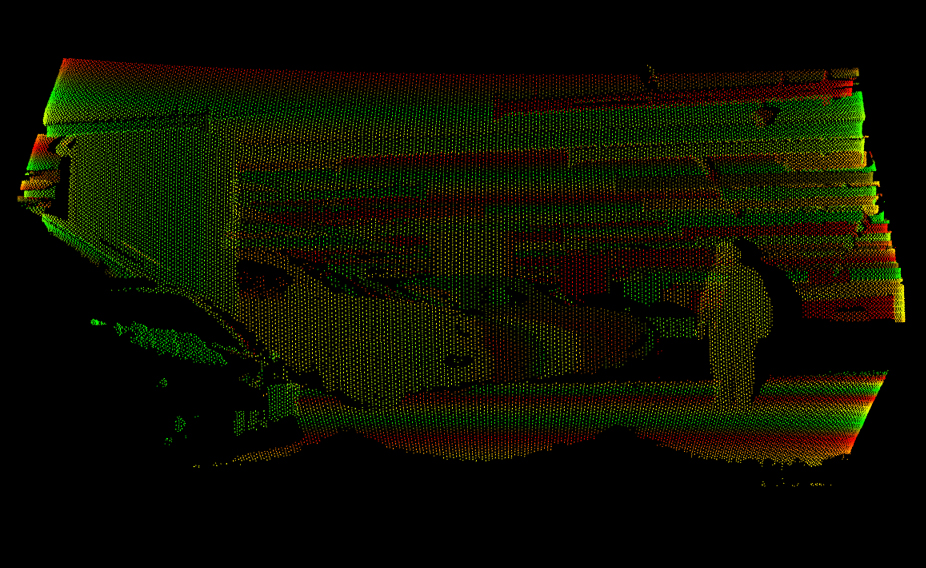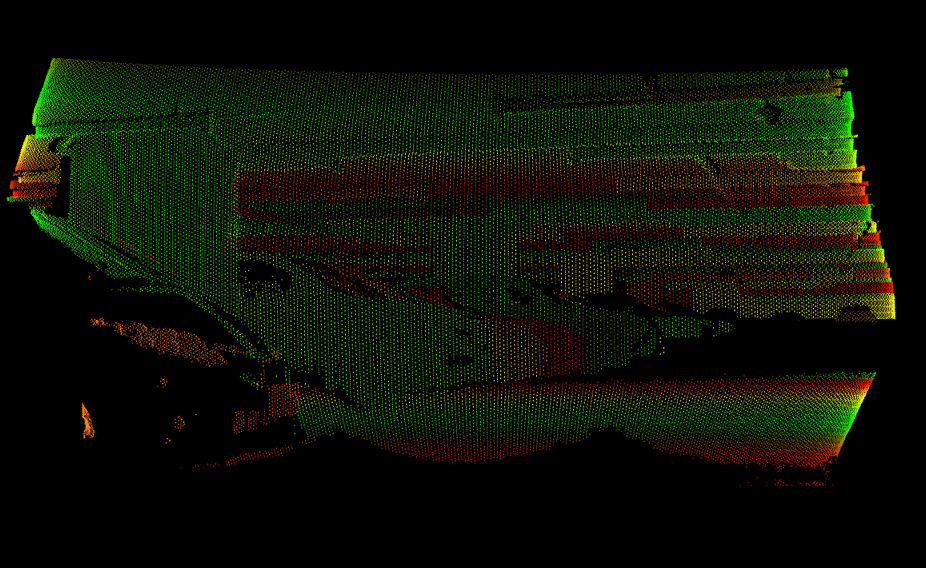
LiDAR
MEMS Mirrors Boost LIDAR Efficiency
At the heart of our innovations is MEMS mirror technology, which significantly enhances LIDAR systems. MEMS mirrors allow for more compact, energy-efficient systems that require less power and manpower, making the technology more accessible across a variety of applications. By reducing the size and weight of optical components, MEMS mirrors contribute to the high performance and versatility of LIDAR systems. This cutting-edge technology is critical for applications in autonomous vehicles, topographic mapping, forestry management, urban planning, and beyond.
An example of actual measurement in parking space.
The LiDAR measurement shows a range of -5M in a single color.

The LiDAR measurement shows a range of -10M in a single color.

MEMS Mirrors and Their Role in LIDAR Systems
LIDAR (Light Detection and Ranging) is a remote sensing technology that uses laser pulses to measure distances and create 3D maps. It’s widely used in autonomous vehicles, topographic mapping, forestry, and archaeology. LIDAR works by sending laser beams to a target and measuring the time it takes for the light to return, providing precise data on distance and elevation.
Core LIDAR Technology
LIDAR uses a laser sensor that sends pulses and measures the return time of reflected light to create accurate 3D maps. MEMS mirrors have significantly improved LIDAR systems by making them smaller, lighter, and more energy-efficient. These micro mirrors replace bulky moving parts, making the system more compact and suitable for mobile applications like autonomous vehicles and drones.
Why MEMS Mirrors are Ideal for LIDAR
MEMS mirrors make LIDAR systems more efficient by reducing the size and weight of the components. Unlike traditional LIDAR systems with large moving parts, MEMS mirrors use fast-moving micro mirrors, reducing energy consumption while enhancing scanning efficiency. This makes MEMS-enabled LIDAR perfect for portable applications.
LIDAR Applications Enhanced by MEMS Mirrors
MEMS mirrors enhance LIDAR’s use in several areas. In autonomous vehicles, MEMS LIDAR improves navigation and obstacle detection. In urban planning, it helps create detailed 3D city models. In forestry, it aids in tree height and density analysis, and in archaeology, it helps uncover hidden structures under vegetation.
Advantages of MEMS-Enhanced LIDAR
MEMS mirrors offer several benefits:
- Compact: Smaller and portable systems.
- Energy-Efficient: Reduced power usage.
- Precise: Faster and more accurate scanning.
- Low Maintenance: Fewer moving parts, increasing durability.
Overall, integrating MEMS mirrors with LIDAR enhances system efficiency, compactness, and reliability, benefiting industries like autonomous vehicles and urban planning.
